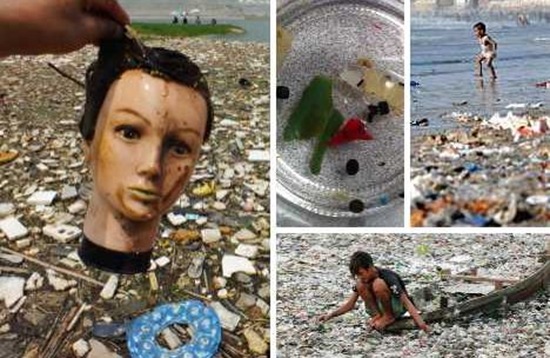
The Great Pacific Garbage Patch is shockingly huge, and it’s not alone. These 6 floating flotsam fields display the consequences of blindly dumping downstream.
1. The Great Pacific Garbage Patch
The Great Pacific Garbage Patch was first discovered by oceanographer and racing boat captain Charles J. Moore in 1997, though its presence and form was predicted almost a decade earlier by researchers from the National Oceanic and Atmospheric Administration (NOAA). Estimated to be twice the size of the state of Texas, the “patch” is actually a concentrated soup of plastic, chemicals and trash suspended in the ocean’s upper water column and herded into a roughly circular area by a rotating gyre of ocean currents in the North Pacific Ocean.
Image via: CalPoly Science Cafe
What doesn’t kill you, makes you stronger…but unfortunately, the only species who are deriving benefits from the existence of the Great Pacific Garbage Patch and others of its type are invasive species who “hitchhike” on the debris. Floating solids like plastic water bottles provide handy platforms for snails, barnacles and other creatures who otherwise would not be able to cross great expanses of open water.
2. Indonesia’s Citarum River Garbage Patch
Not all garbage patches are oceanic; smaller patches on lakes and rivers exist to varying degrees of foulness wherever human activity combines with abuse and neglect of local waters. The poster child for riverine garbage patches has to be the Citarum River in West Java, Indonesia. This hard-working river serves the needs of over 28 million people along its course and boy, does it ever look it! In December of 2008, the Asian Development Bank declared the Citarum to be the world’s dirtiest river and approved a US$500 million loan dedicated to cleaning and revitalizing the toxic, filth-clogged waterway.
Image via: RWS Photo
The Citarum River may look like an open sewer but at the same time it provides 80 percent of the surface water supply used by approximately 12 million people living in Jakarta, Indonesia’s capital city. Though garbage dumped by humans is the most visible component of the Citarum’s tide of trash, there are also some 2,000 factories and millions of homes continually flushing untreated waste into the river.
3. China’s Three Gorges Dam Garbage Patch
Image via: Wuhu News
China’s Three Gorges Dam on the mighty Yangtze River is certainly a wonder of the modern world but with modern wonders come modern problems, in this case floating masses of household trash and garbage in the dam’s enormous reservoir. These images were taken in mid-July and depict what happens when a river that has flowed unhindered since before the advent of human civilization backs up behind a man-made barrier: people who thought the trash they dumped would float downstream as always find they have to think again about how they dispose of trash.
Images via: Wuhu News
At its maximum water level, the Three Gorges Reservoir stretches about 660 km (410 mi) in length and extends 1.12 km (3,700 ft) in width. Its surface area averages 1,045 sq km (403 sq mi). Though Chinese engineers expected silt and sediment to gradually build up behind the dam, they didn’t count on much more visible floating fields of trash despoiling what was once a picturesque view.
4. The Indian Ocean Garbage Patch
In 2010, researchers from the Five Gyres Project confirmed the existence of an Indian Ocean Garbage Patch in the centre of the Indian Ocean Gyre. The concentration of debris had been suspected for some time due to the amount of trash and garbage that had been washing ashore on beaches bordering the Indian Ocean. Anna Cummins, cofounder of the 5 Gyres Institute, likened the pollution in the Indian Ocean Garbage Patch to “a thin plastic soup.”
5. The North Atlantic Garbage Patch
The pattern of ocean currents in the North Atlantic Ocean, along with the region’s prevailing winds, helped facilitate centuries of trade and colonization between western Europe and North America. Nowadays, these natural forces play a different, more sinister role: acting as a gyre that concentrates trash, garbage and waste. Since 1986, the Sea Education Association (SEA) in Woods Hole, Massachusetts, has been documenting oceanic plastic in the western North Atlantic Ocean while other researchers have examined marine life in the area for any deleterious effects. The photo above (c/o National Geographic) shows a dead Triggerfish found in the Atlantic Ocean which had 47 pieces of plastic debris in its stomach.
6. Lake Erie Garbage Patch
Images via: Inhabitat
If you thought giant garbage patches were someone else’s problem, look a little closer to home - that is, if your home is near one of North America’s Great Lakes. These immense stores of fresh water have become increasingly polluted over the decades to the point where they are developing “garbage patches” similar to those in the world’s oceans.
Image via: Fry12/Birmingham
In another ominous similarity to oceanic garbage patches, those found in the Great Lakes - Lake Erie especially - so-called “microplastic” has been found in concentrations up to 650,000 bits of plastic per square kilometre. These plastic bits are not strictly biodegradable but they DO degrade, being worn down to smaller and smaller pieces that all the while exude resins and other toxins into the lakes’ supposed fresh water. If you live in a Great Lakes state or province, you might want to consider this the next time you bathe, shower or pour a cold glass of water from the tap.
Related Post: 7 Most Disgusting Wonders of the World
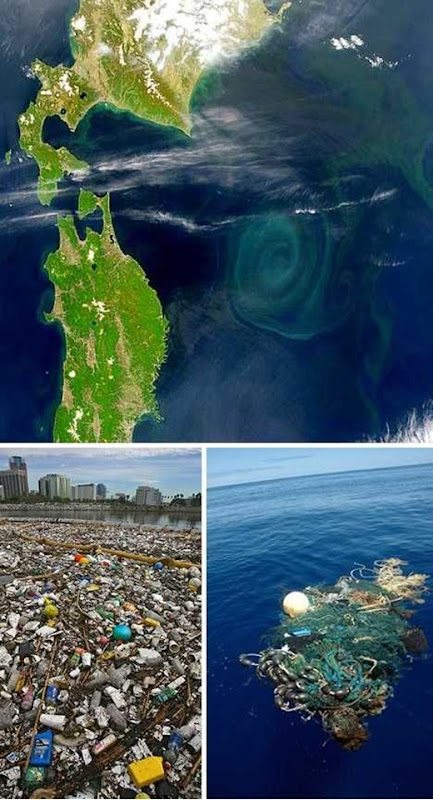
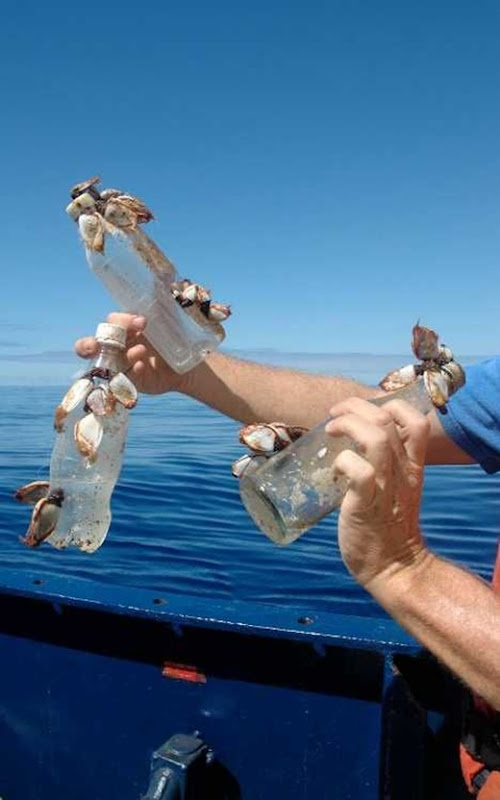
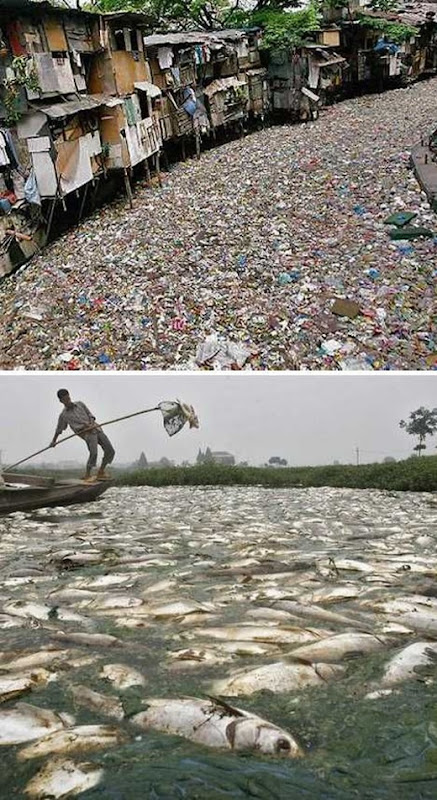
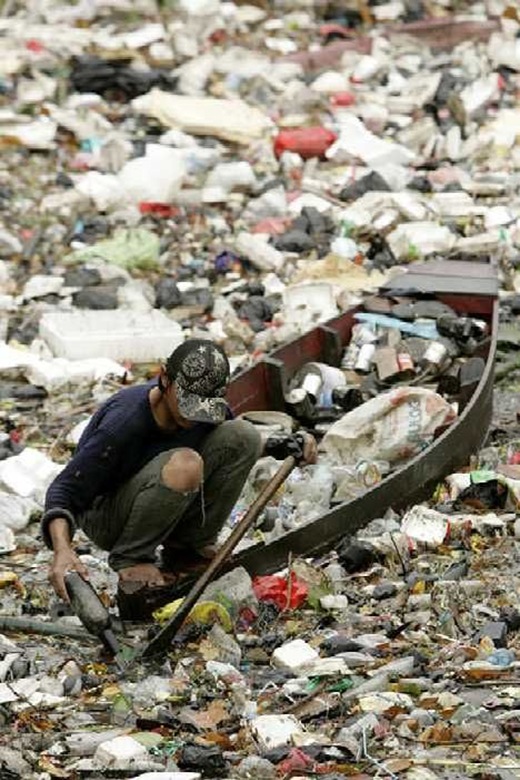
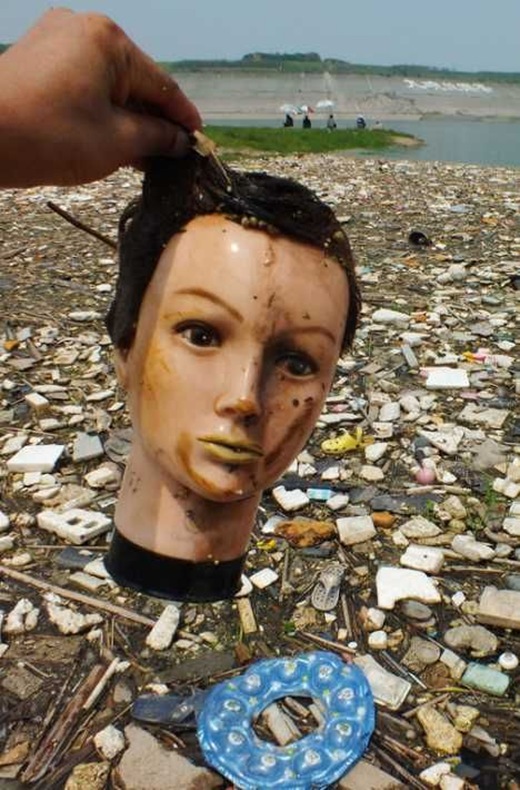
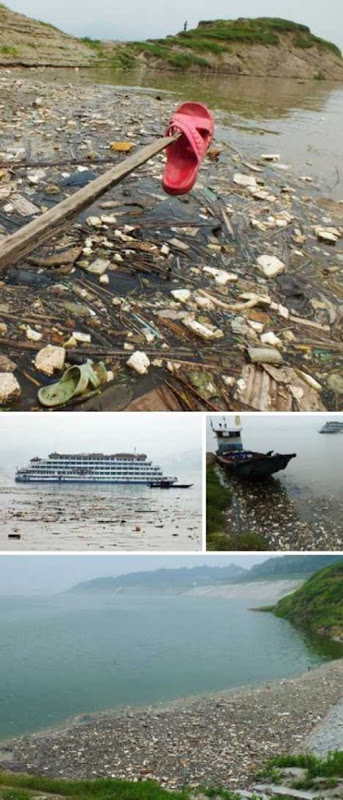
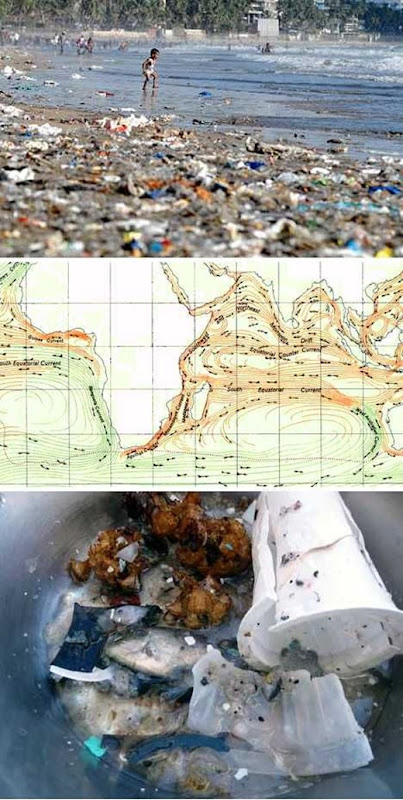


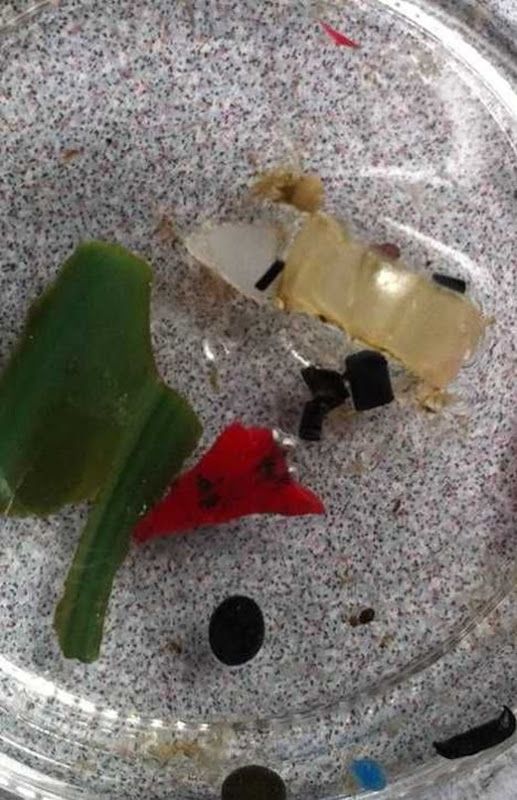
Hello,
ReplyDeletecheck GarbageDisposerReviews.com for all your garbage disposal related stuffs.
Thanks